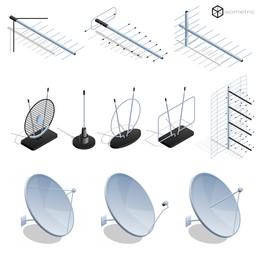
This article provides tips on how to compare different types of TV antennas in order to find the best one for your needs. It discusses factors to consider such as price, range, durability, and installation.
Evaluate your location. Consider the distance from broadcast towers, obstructions, and geography.
Evaluating your location for its potential to give you the best possible TV reception involves a few key factors. The first is proximity to broadcast towers. The closer you are to a tower, the better your chances are of receiving a strong signal. The second factor is obstructions. If there are tall buildings or trees near your home, they can block the signal from the tower and cause interference. The third factor is geography. If you live in a mountainous area, the terrain can also affect the signal strength. By taking all of these factors into consideration, you can get an idea of whether or not your location is ideal for TV reception.
Determine your needs. Consider what you want to watch and how much reception you need.
There are a few things you need to think about when considering how to set up your TV. First, you need to decide how many channels you want to be able to receive. If you live in a small town, you may only need a few channels. However, if you live in a large city, you may want to get as many channels as you can. The second thing you need to consider is how good of a reception you need. If you live in a rural area, you may need to get a booster for your antenna. Finally, you will need to decide where you want to put your TV. You may want to put it on a stand in your living room or you may want to wall mount it. Either way, make sure you have enough space for it.
Compare antennas. Research different types of antennas and compare their features.
Whether you're looking for a new antenna for your car, your home, or your office, it's important to compare different types to find the best one for your needs. There are many different factors to consider when choosing an antenna, including price, range, durability, and installation. Car antennas come in a variety of shapes and sizes, and can be either external or internal. External antennas are usually more powerful, but can be more difficult to install. Internal antennas are easier to install but may not provide as much power. Home antennas are typically larger and more powerful than car antennas, and can be either directional or omnidirectional. Directional antennas need to be pointed in the direction of the signal, while omnidirectional antennas can pick up signals from all directions. Office antennas are usually similar to home antennas, but may be even larger and more powerful. They can also be either directional or omnidirectional. When comparing antennas, it's important to consider the different features and decide which is most important to you. Price is often a major factor, but it's also important to consider range, durability, and installation. No matter what type of antenna you're looking for, there's sure to be one that's perfect for your needs.